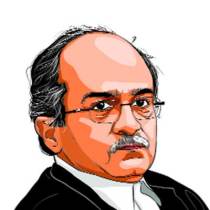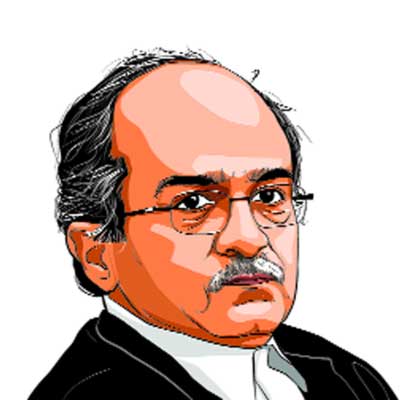Dissent in its place
Supreme Court verdict recognises citizens’ right to hold protests at Jantar Mantar. But by leaving much to executive discretion, Court has also paved the way for restriction of the right

The judgment seems to leave a lot of scope for executive intervention: The police commissioner will frame the regulations for the ‘limited’ use of designated spaces. (Illustration: CR Sasikumar)
Protests play a crucial role in the civil, political, economic, social and cultural landscape of any progressive democracy. Peaceful resistance has been pivotal in bringing about radical positive transformation in the country’s socio-political fabric. The courts have also upheld that a citizen’s fundamental right to protest and assemble peacefully without arms is a distinguishing feature of a democracy. In Anita Thakur and Ors v. Government of J & K and Ors (2016), the Supreme Court pointed out: “We can appreciate that holding peaceful demonstration in order to air their grievances and to see that their voice is heard in the relevant quarters is the right of the people. Such a right can be traced to the fundamental freedom that is guaranteed under Articles 19(1)(a), 19(1)(b) and 19(1)(c) of the Constitution.”
Till the 1980s, Indian citizens had unrestricted rights to hold dharnas, protests and agitations in the Boat Club lawns near India Gate along the Rajpath in Delhi. After the Mahendra Singh Tikait-led agitation in 1988, protests at the Boat Club lawns were restricted. The entire Central Delhi region — where several government establishments have their offices — turned into a fortress and the fundamental right of the citizens to protest in this area was completely denied. From 1993 till recently, the only place where protests were allowed was Jantar Mantar. The Delhi Police cited the order banning protests in central Delhi to restrict protests in Jantar Mantar as well. In 2010, this order was challenged by a Bhopal Gas Peedit Mahila Stationary Karamchari Sangh member who had come to Delhi along with other activists to protest against the Centre’s failure to set up an empowered commission to look into the problems of the Bhopal gas tragedy victims. The Delhi Police filed an affidavit before the Delhi High Court stating that the use of Section 144 of the CrPC for the prohibition of public meetings, dharnas and peaceful protest in central Delhi had been discontinued. The petition was disposed of. However, orders under Section 144 were issued repeatedly, severely restricting the fundamental right of citizens to protest and assemble peacefully.
The continuous and arbitrary imposition of Section 144 was challenged in the Supreme Court by the grassroots advocacy organisation, the Mazdoor Kisan Shakti Sangathan. The court was asked to strike down the repeated imposition of such prohibitory orders under the garb of maintaining law and order because in essence such orders can only be imposed when there is an imminent threat to public order or to prevent harmful activities. In Madhu Limaye v. Sub-Divisional Magistrate, Monghyr and Ors the Court had held, “the gist of action under Section 144 is the urgency of the situation, its efficacy in the likelihood of being able to prevent some harmful occurrences.” The Mazdoor Kisan Shakti Sanghatan petition, therefore, pointed out that the repeated police orders signaled attempts by the state to curb the right of citizens to protest and peaceful assembly.
The right of citizens to assemble peacefully vis-a-vis the right of the authorities to restrict protests, or the countervailing right of other citizens to use public spaces like streets and parks has been the matter of several judgments. A constitution bench in Himat Lal K. Shah v. Commissioner of Police, Ahmedabad, while dealing with the challenge to the rules framed under the Bombay Police Act regulating public meetings on streets, held: “The State cannot by law abridge or take away the right of assembly by prohibiting assembly on every public street or public place. The State can only make regulations in aid of the right of assembly of each citizen and can only impose reasonable restrictions in the interest of public order.”
The essence of this fundamental right, as elucidated in international standards and verdicts of courts in other countries, is that protests will be held at places where they are most visible — that is, near the seat of power. With the ban on protests in all of central Delhi, a further ban on protests at Jantar Mantar, following the National Green Tribunal (NGT) order last year, meant that citizens were pushed away from places where their protest would have had the most visibility. The offer to use the Ramlila Maidan for staging protests, initially at an exorbitant cost of Rs 50,000 a day and later, free access to a part of the ground, was inadequate for the full realisation of this right. So, a separate civil appeal was filed challenging the NGT ban on protests at Jantar Mantar.
In its recent judgment, while lifting the NGT ban on protests at Jantar Mantar, the Supreme Court has tried to strike a balance between the rights of citizens and the larger public good. While recognising the fundamental right to protest, the court has also allowed the use of Jantar Mantar and Boat Club grounds for peaceful assembly. It has ruled that the right to protest includes the right to assemble at a place where one can be seen and heard by the authorities and deprecated the continuous and illegal imposition of Section 144. However, the court has gone on to make observations that could curtail the exercise of this right substantially.
Despite several of its earlier verdicts laying down the conditions necessary for the imposition of Section 144, the Court has not struck down its repeated and arbitrary imposition. The judgment seems to leave a lot of scope for executive intervention: The police commissioner will frame the regulations for the “limited” use of designated spaces. The idea of prior permission for protests also severely restricts the fullest realisation of a constitutional right. It subjects the exercise of this right to executive discretion — the executive determines whether a particular protest is “innocuous” or not. One wonders whether the benchmarks set out in the judgment would really ease the way for protests questioning governmental/political accountability and corruption.
In upholding the right and yet going on to state that citizens cannot demand a particular place for protest in the age of technology and social media, the Court has ignored how mass organisations of farmers, Dalits, Adivasis, landless workers are far removed from the advances in digital technology or lack the means of harnessing them for dissent. Moreover, social media can’t be a substitute for physical assembly and protest. Subjecting the exercise of the right to the sensitivities of foreign dignitaries or high functionaries using the area is an unreasonable restriction. It amounts to a dilution of this right.
It seems that the Court has missed the opportunity to deliver a clear verdict on a crucial issue. While it has accepted the right to protest, which was in any case sanctified by the judiciary and the Constitution, the apex court has given considerable leeway to the police to restrict and throttle the exercise of this right. Let’s wait and see what guidelines are framed by the police commissioner. It is likely that the matter will go back to the Court for a clearer elucidation of the rights of the citizens of this country to assemble and protest.
Bhushan and D’souza are advocates practising at the Supreme Court of India. Bhushan represented the Mazdoor Kisan Shakti Sangathan in the Jantar Mantar case
For all the latest Opinion News, download Indian Express App
More From Prashant Bhushan
- King of the courtSupreme Court has let go of the opportunity to immunise the allocation of cases from abuse of power by the CJI and to democratise the…
- A transparency deficitThe allegations by the judges also raise serious doubts about the independence of the judiciary, given that an estimated 45 to 70 per cent…
- A new (agri)cultureUnless we quickly get our act together, we must be prepared to face the consequences. In any food crisis, it is the top of the…







































No hay comentarios:
Publicar un comentario